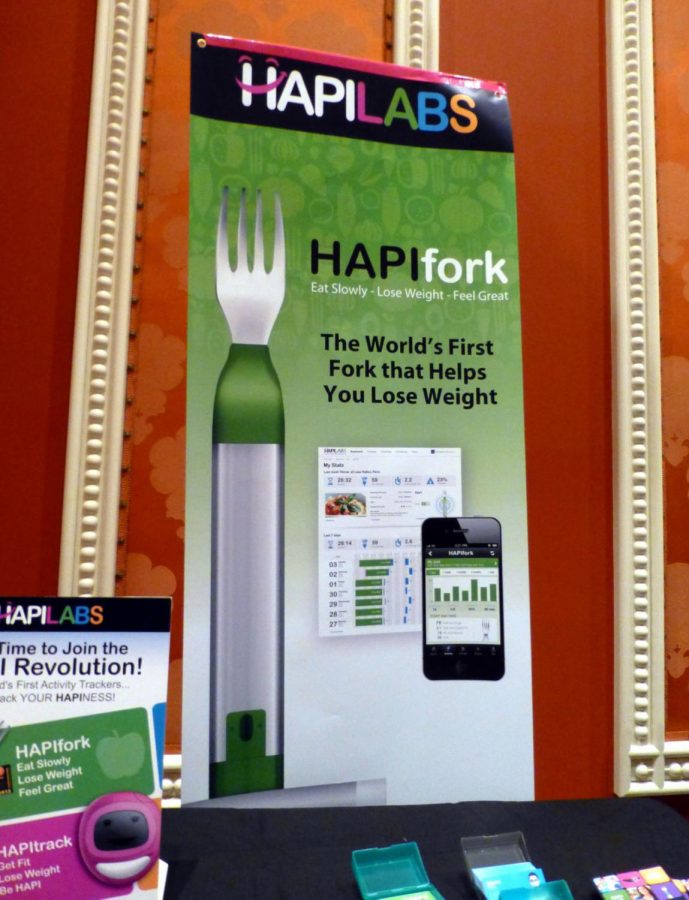New weight loss gadgets are ineffective wastes of money
High-end gadgets such as the Fitbit, NikeFit and the soon to be released Apple Watch have become the solution to weight loss for many. Nowadays, the pedometer is just too simple. Gone are the days where one would just “eat right and exercise” to drop the extra pounds. This is the digital age.
Introducing the HapiFork. For a mere fee of $99, one can purchase a smart fork that will vibrate when you are eating too fast.
According to research, eating too quickly leads to poor digestion, gastric reflux and, most importantly, weight loss.
Instead of spending thousands on a tummy tuck, wouldn’t a $99 fork be a better investment?
Don’t think about eating slow yourself; a simple buzz in your hand will realize you are eating incorrectly before you even realize yourself. Literally, your mouth will vibrate when you eat faster than the allowed time interval. How’s that for operant conditioning?
The HapiFork, unfortunately, doesn’t realize what one is putting in his or her mouth in the first place. Effective weight loss is based on what you put in your mouth, rather than the pace it goes in. Stuffing one’s face with kale salad is vastly different from eating at moderate pace a bacon cheddar double cheeseburger with fries.
Rather than forking out $100, here are some health tips that will save you money and time.
First, serve things in small plates. We mentally always want to fill-up a plate, so using smaller ones will prevent us from overeating.
Second, when eating out, have your server wrap up half the meal, ready for you to take home. Everything is big in Texas, and meal sizes are no exception to that.
Third, have dinner with someone. That way your mouth is being used to talk rather than take too-quick portions.
Fourth, document your meals so you actually know what you’re placing in your mouth. You could do this by either writing it down or taking a photograph. Little things you munch on throughout the day add up, it’s important to keep track.
Granted, the HapiFork has good intentions. Texas’ obesity rates are higher than ever, reaching 30.9 percent last year, almost equivalent to the national rate of 34.8 percent.
Initially moving to the US for college last year, I was once overwhelmed by the portion sizes that compared to my tiny Asian-sized portions (Has anyone noticed that portion size may be equivalent to body size?).
As my ability to eat a full Chuy’s meal grew, so did my waist line and the freshman 15 didn’t seem a myth anymore.
So, maybe the HapiFork is necessary for a society who can’t control how much they put into themselves.







